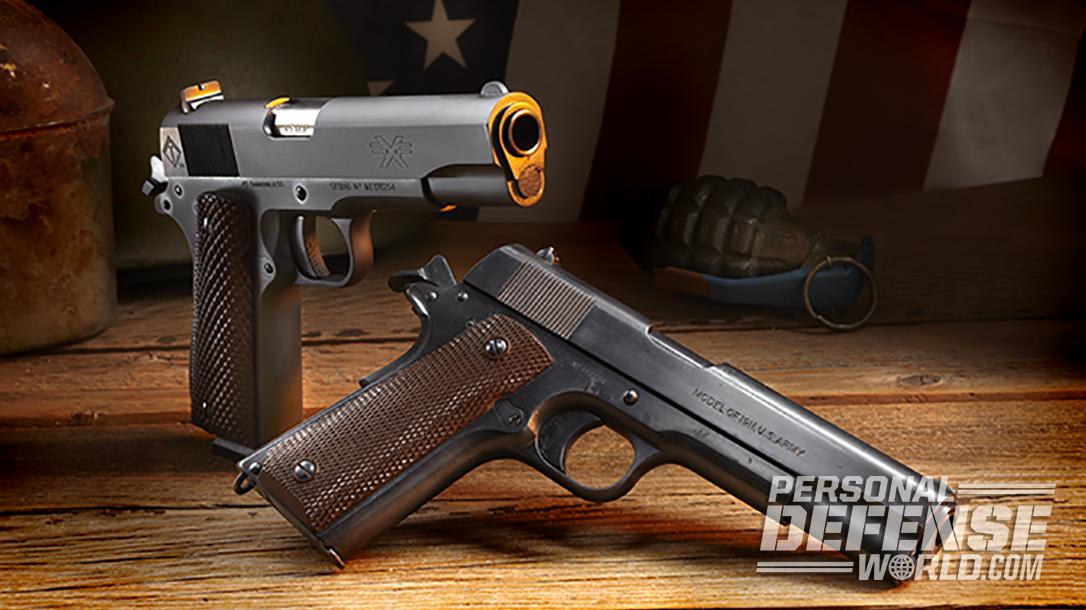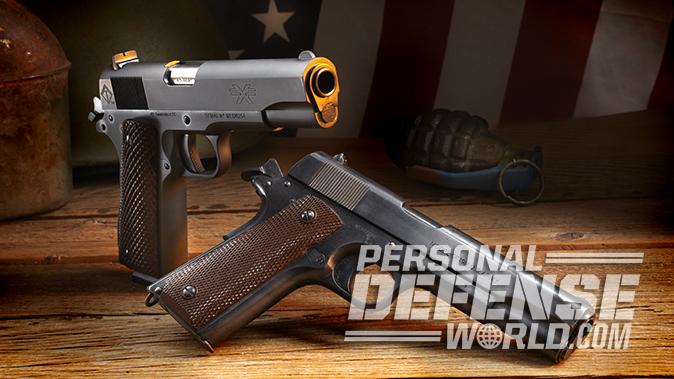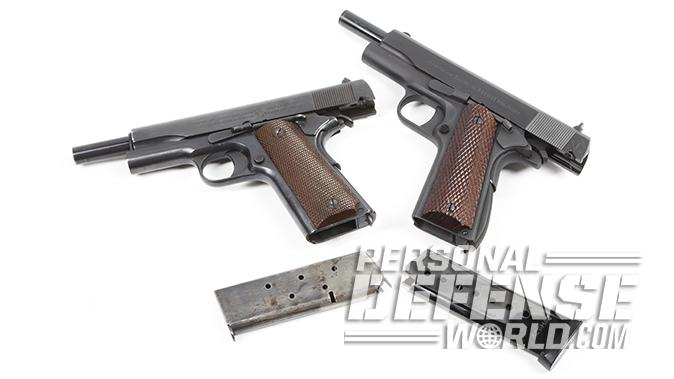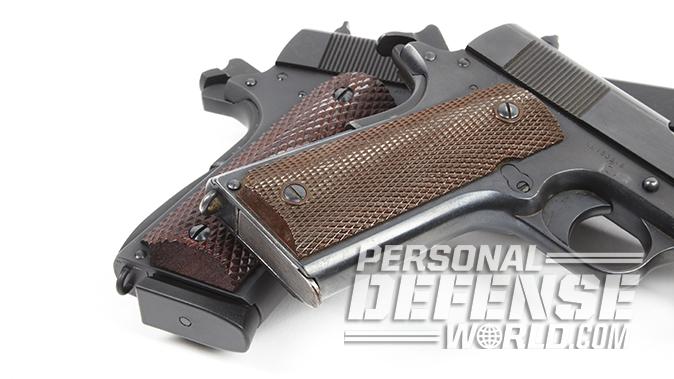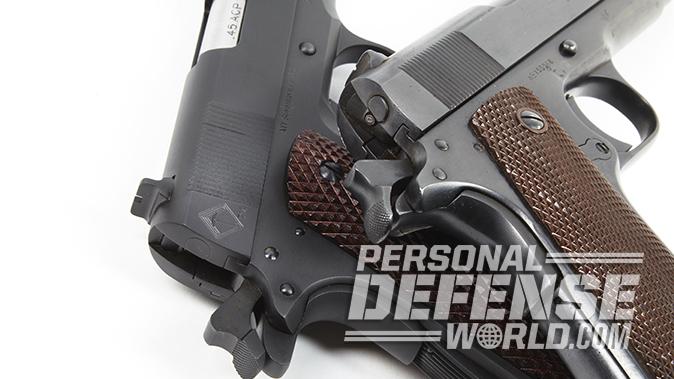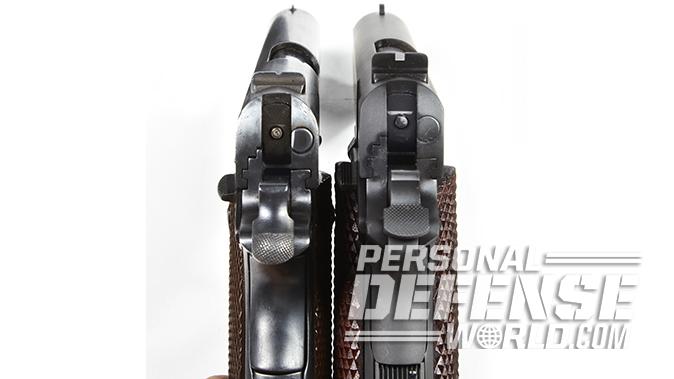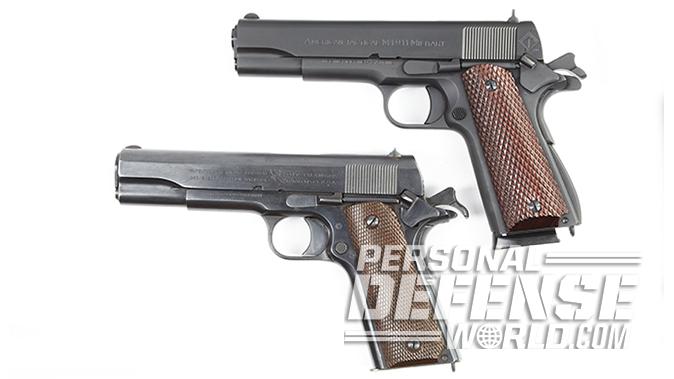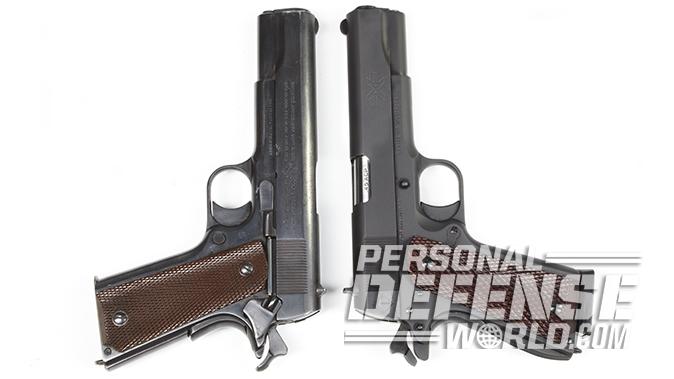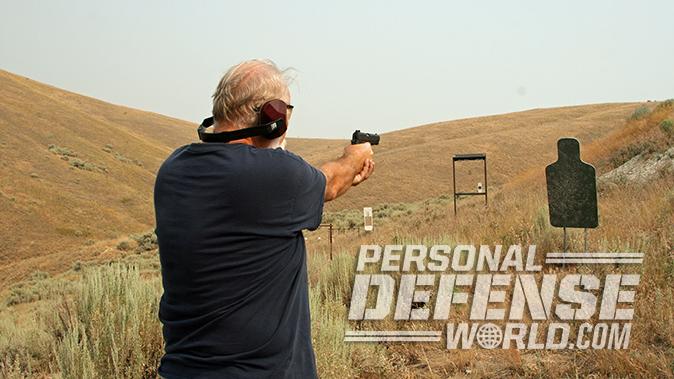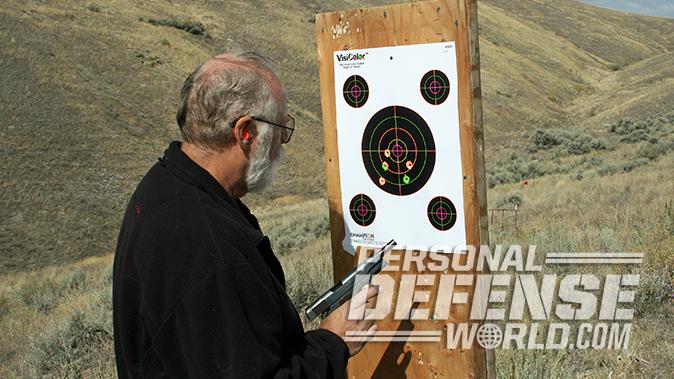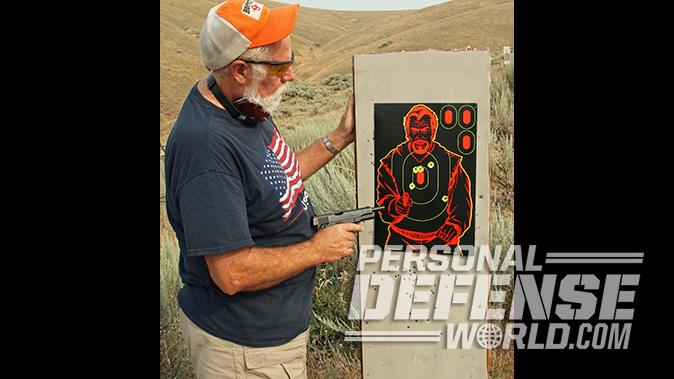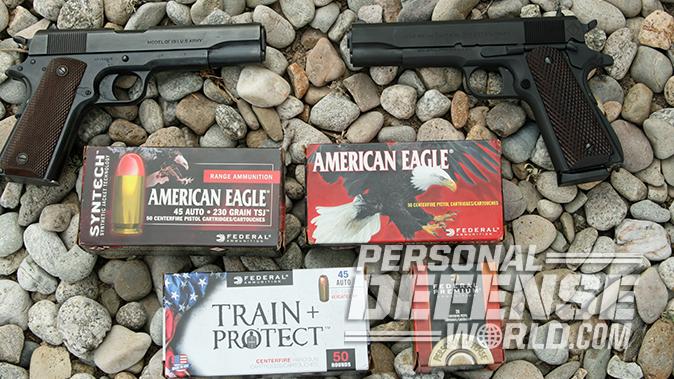There is no shortage of modern Model 1911s available today, but I personally lean toward the more traditional things in life. So when I heard that American Tactical was producing a classic version of the Model 1911 that mirrored the traits and characteristics inherent in the original GI model, I quickly got on board. This gave me the unique opportunity to do a close comparison between the American Tactical FX Military 1911 and an actual government-issued model built a full 100 years earlier.
My brother is lucky enough to own one of the original models, which he purchased back in the 1960s or possibly the early 1970s through an NRA membership sale. At that time, the NRA offered each of its members an opportunity to purchase Model 1903A3s, M1 Garands, M1 Carbines and Model 1911s directly from the association. If I recall correctly, the prices ran from about $14 up to $24 for each of those firearms. Unfortunately, in those days it really wouldn’t have mattered if the price was $1 million or $14; there simply was no way I could justify such a purchase in my young family’s budget. So, I had to personally pass on that opportunity, and I’ve regretted it ever since.
When the GI model arrived, it came with the usual military-style Parkerized finish. Unfortunately, to spiff it up, my brother sent it off to get a bit of a facelift with a re-bluing job. Other than that, the pistol is as it was back in the day.
Advertisement — Continue Reading Below
1911 History
Few, if any, handguns have achieved the reputation and worldwide acclaim that the Model 1911 has garnered through the years. This was the handgun of choice used by our military for decades, including during WWI, WWII, the Korean War and the Vietnam War. And, more recently, it played a role for some of the specialized U.S. Army Special Forces and Marine Corp units involved in both Iraq and Afghanistan.
Advertisement — Continue Reading Below
To characterize its unrelenting reliability, it is often said that you can throw a 1911 down in a mud hole, stomp on it, then pull it out, dripping with nastiness, and it will function and shoot as if nothing had happened as long as the bore is clear. Like the Duracell bunny, the 1911 “just keeps on going and going and going.” Or maybe it would more appropriate to say it just keeps on shooting and shooting and shooting.
Like so many of today’s best firearms, the Model 1911 was one of the many guns developed by John Moses Browning. As the model name would seem to indicate, production began in 1911 and went on for nearly six decades, ending in 1970. Over that timeframe, the model changed very little, but a couple of improvements were made in 1923 that included the replacement of the mainspring housing with a checkered, arched design. The grip safety spur was also replaced with a longer one. These features are found on the M1911A1. Most, if not all, of the government-issued handguns came with a Parkerized finish, while the commercial versions were most often blued and carried a letter “C” within their serial numbers.
In order to supply the U.S. military with an adequate number of these handguns, Colt granted permission to various other manufacturers to produce them over the years, including Ithaca, North American Arms (Canada), Remington, Singer, Union Switch & Signal and Springfield Armory.
Advertisement — Continue Reading Below
The 1911s were built like the vast majority of military weapons, with a lack of tight tolerances. That lack of precision was necessary in order for the weapons to be easily serviced and repaired in the field, allowing the parts to be swapped out during battle if necessary. But that ability frequently came at a cost, manifesting itself in a loss in shooting accuracy.
Many years ago, I heard a high-ranking U.S. general being questioned about the long tenure of the 1911 with U.S. forces. Unfortunately, I don’t recall which general it was, but his response was that the military issued these weapons to its troops primarily for psychological reasons. Just the knowledge that a large-caliber handgun was strapped to the GI’s hip provided a degree of confidence when in battle. The general went on to say that very few enemies were ever actually shot or killed by a 1911, but that psychological boost was deemed very worthwhile, even if the pistol was never drawn from its holster.
The Original
Advertisement — Continue Reading Below
As I indicated earlier, my brother’s GI model was as it came from the soldier’s holster, with the exception of its re-bluing. According to manufacturing records, this particular handgun celebrated its 100th anniversary in 2017, remaining a very attractive and perfectly functioning firearm. There’s no polymer here, only solid steel. This particular model was built for the government by Colt itself in Hartford, Connecticut. It weighs 39 ounces unloaded, has fixed front and rear sights and features a 5-inch barrel chambered in .45 ACP. Its overall length is 8.5 inches, and the grips are checkered plastic.
I was lucky enough to come by some old military .45 ACP rounds, many of which possessed headstamps dating from 1942 to 1954. Obviously, these cartridges were produced with the intention of being used in either World War II or the Korean War. I am always a bit antsy about shooting any old ammunition, but I thought it would be a unique experience to be able to reunite the old GI workhorse with the ammo of its own era.
Becoming convinced that this was a good idea, I approached the situation with a certain amount of caution by first pulling several of the bullets and checking the powder for any signs of deterioration. In every case, the powder appeared to be in pristine condition, and there were no telltale acidic odors associated with it. So, a bit boldly, I decided to give the cartridges a whirl and was pleasantly surprised by the shooting results. After a full seven and a half decades in storage, the old ammo shot remarkably well, producing very consistent groups essentially on par with modern ammunition.
Advertisement — Continue Reading Below
Shared DNA
I found the American Tactical FX Military 1911 to be a near-perfect replica of the historic model. In fact, when lying next to one another, the two pistols appeared so visually similar that I had to check the markings on their slides so I didn’t get them mixed up. With its frame and slide both manufactured from 4140 steel, the FX Military 1911 features an expertly applied matte blued finish.
Both share a similar size and feel about them. The specifications on the FX Military 1911 indicated a weight of 37 ounces, but it registered 44 ounces on my own scale, only 5 ounces different than its older sibling. Both handguns came with 5-inch barrels and checkered plastic grips. The checkering on the GI model, however, was a little finer (more diamonds per inch) than that of the American Tactical model.
Advertisement — Continue Reading Below
Both used eight-round magazines. But another somewhat minor deviation involved the seated depth of the magazine. When the magazine of the 100-year-old model was in place, the bottom of the magazine was perfectly flush with the bottom of the grip while the FX Military 1911’s magazine was designed so it hung down about 0.3 inches from the bottom.
The sights on both were of the fixed variety and only slightly different, but in the case of the FX Military 1911, I found those differences to be an improvement. In the latter case, the notch in the rear sight was a bit more pronounced and the front blade sight was a bit wider. I found these differences made aligning the sights much easier on the newer gun than the GI model.
Advertisement — Continue Reading Below
I felt both models had triggers that are superior to the vast majority of those used in semi-auto handguns produced today. The amount of creep and excess movement was minimal, and the let-offs were very good in both cases. Checking the pull weights of the triggers, I found a substantial improvement in the newer version. The FX Military 1911 demonstrated a more preferable pull weight of only 4.7 pounds as compared to the GI model, which came in at a fairly stout 6.8 pounds.
Range Performance
Whenever checking and evaluating any firearm, I like to shoot a variety of different cartridges. In this case, that ammunition consisted of Federal Personal Defense ammo loaded with 230-grain Hydra-Shok JHP bullets, American Eagle range ammo loaded with 230-grain Syntech TSJ bullets, Federal’s new “Train + Protect” load with 230-grain Versatile HP bullets, American Eagle cartridges loaded with 230-grain FMJs, and for the GI model 1911, a few rounds of the historic cartridges.
Advertisement — Continue Reading Below
I found all of the cartridges shot very well, with respectable groups at 25 feet on paper. They seldom missed my man-sized Action Target steel silhouette situated at 15 yards while shooting off-hand. There was never a misfire, nor were there any signs of feeding or ejection problems.
American Pride
Unfortunately, I can’t go back in time and purchase one of those $14 NRA specials, and it seems that most of the authentic GI models have essentially disappeared from the used market. So, in order for me to own one of these fine examples of our historic military past, I have opted to go with American Tactical’s lookalike. This makes perfect sense to me; this model is a near-perfect representation of the pistol that our troops packed on their hips over the decades.
Without a doubt, American Tactical took great effort in the producing the FX Military 1911. In my mind, any shooter would be proud to own one. And priced at only $450, it won’t break the bank to purchase one of these fine weapons.
For more information, visit americantactical.us.
Colt Model 1911 Specs
- Caliber: .45 ACP
- Barrel: 5 inches
- OA Length: 8.5 inches
- Weight: 39 ounces (empty)
- Grips: Plastic
- Sights: Fixed
- Action: SA
- Finish: Parkerized/blued
- Capacity: 7+1
- MSRP: N/A
American Tactical FX Military 1911 Specs
- Caliber: .45 ACP
- Barrel: 5 inches
- OA Length: 8.46 inches
- Weight: 37 ounces (empty)
- Grips: Plastic
- Sights: Fixed
- Action: SA
- Finish: Blued
- Capacity: 8+1
- MSRP: $450
This article is from the January/February 2018 issue of “Combat Handguns” magazine. To order a copy and subscribe, visit outdoorgroupstore.com.
